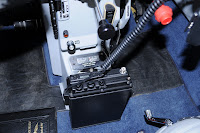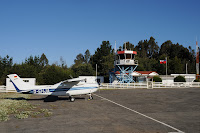41 days, 25298NM
 |
| Sevilla LEZL |
 |
| FL260 abeam UMKAL |
Frankfurt Egelsbach - Sevilla (EDFE-LEZL) 8:49, 1089NM 14.11
 |
| Robinson Crusoe Island SCIR |
Sevilla - Dakar (LEZL-GOOY) 9:36 1567NM 15.11.
Dakar - Recife (GOOY-SBRF) 10:24 1746NM 16.11.
Recife - Rio de Jeneiro (SBRF-SBRJ) 7:15 1096NM 18.11.
Rio de Jeneiro - Foz de Iguasu (SBRJ-SBFI) 4:47 668NM 20.11.
Foz de Iguasu - Punta del Este (SBFI-SULS) 3:45 578NM 21.11.
Punta del Este - Santiago de Chile (SULS-SCEL) 6:13 872NM 26.11.
Santiago de Chile - Valparaiso (SCEL-SCRD) 0:35 65NM 26.11.
Valparaiso - Robinson Crusoe Island (SCRD-SCIR) 2:44 393NM 29.11.
Robinson Crusoe Island - Easter Island (SCIR-SCIP) 9:57 1623NM 30.11.
Easter Island - Gambier Island/Totegegie (SCIP-NTGJ) 8:12 1413NM 2.12.
Totegegie - Tahiti (NTGJ-NTAA) 5:15 923NM 4.12.
 |
|
Robinson Crusoe Island
|
Tahiti - Cook Island (NTAA-NCRG) 3:50 639NM 7.12.
Cook Island - Nadi/Fiji (NCRG-NFFN) 8:46 1336NM 9.12.
Nadi/Fiji- Brisbane (NFFN-YBBN) 9:37 1496NM 11.12.
Brisbane - Alice Springs (YBBN-YBAS) 7:51, 1120NM 15.12.
Alice Springs - Port Hedland (YBAS-YPPD) 5:42 887NM 16.12.
Port Hedland - Singapore (YPPD-WSSL) 11:02 1635NM 18.12.
Singapore - Colombo (WSSL-VCBI) 9:47 1516NM 20.12.
Colombo - Muscat (VCBI-OOMS) 10:36 1646NM 21.12.
Muscat - Paphos (OOMS-LCPH) 11:13 1546NM 23.12.
Paphos - Frankfurt (LCPH-EDFE) 9:50 1437NM 25.12.
 |
| Paphos LCPH |
 |
| Alice Springs at night |







.jpg)


.jpg)



.jpg)


.jpg)















